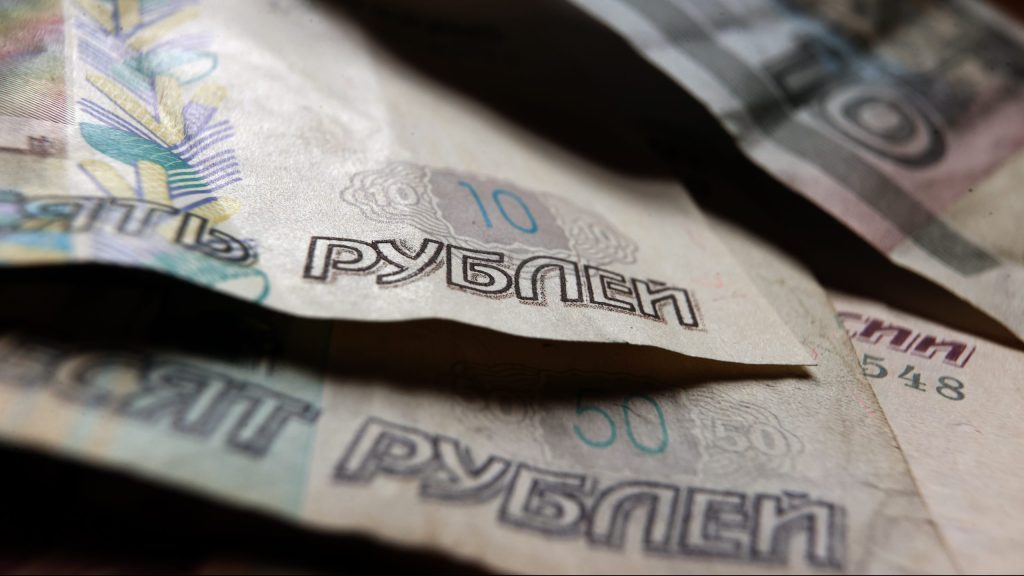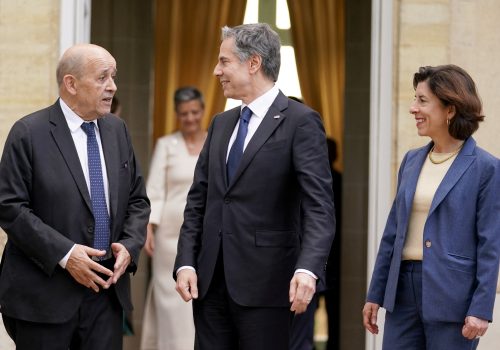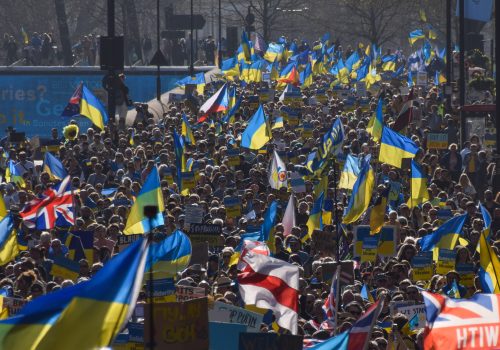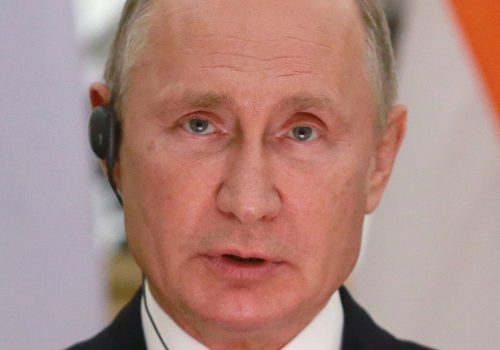As the Russian ruble began its recovery in March from a sanctions-induced collapse following the Kremlin’s invasion of Ukraine, Western governments began arguing that the exchange rate shouldn’t be used as an indicator of the effectiveness of their sanctions. The Russian financial system may have withstood the initial shock—but a fall in gross domestic product (GDP) and crippling input shortages, they claimed, would force Moscow to eventually de-escalate as the war entered a grinding phase.
But it’s time to reassess this stance.
Today, the US dollar, which has outperformed other Western currencies since January, buys slightly more than sixty rubles; before the invasion, the rate was closer to eighty. To support a faltering economy, the Central Bank of Russia (CBR) has gradually reduced the key interest rate from its peak of 20 percent to 11 percent, and has begun relaxing the capital controls—and yet the appreciation continues. Ultimately, the ruble’s resilience is down to oil and gas revenue. This is coupled with a record-high trade surplus of $38 billion in April, pushed up by Western embargoes. In other words, Russia is earning money it can’t spend.
This week, the CBR even began intervening to slow this appreciation by buying up foreign currency with rubles, its modus operandi in the early 2000s as export revenues soared. This move will allow the bank to replenish its stock of accessible foreign-currency reserves. When 60 percent of those reserves were frozen in February, the CBR carefully managed its remaining supply (as well as daily oil-and-gas income) to make limited interventions to support the ruble. Now, with the policy in reverse, reserves will increase rapidly.
For anyone who wants to halt Russian aggression, it’s crucial to reduce the flow of Western currency to Russia sooner rather than later.
A useful veneer
Of course, there isn’t much point to a strong currency if inputs and desirable consumer goods can’t be imported. But Russia’s financial and currency stability also make it too attractive for firms in non-aligned economies to resist. Large Chinese state-owned enterprises and tech firms haven’t gone out of their way to help Russia so far, but smaller firms producing substitutes for Western goods sense an opportunity: a middle-income country that pays its bills on time, even in a recession.
Indeed, while high energy prices have softened the blow of sanctions, they also highlight just how dependent Russia is on its energy income: Despite that windfall, a severe economic contraction has remained the base case, implying all other sectors are suffering. While Western companies have been able to divest without risking profitability, in Russia car factories are being mothballed, infrastructure updates are being canceled, and an urgent need is growing for new buyers in the country’s steel and aluminum industry.
Yet here lies the opportunity for the many countries that have decided not to wield sanctions—one which could help bolster Russia’s economy by backfilling essential inputs, car parts, and consumer goods.
To court their business and investment, Russia has gone out of its way to retain a veneer of financial respectability. Servicing its foreign debt is a key part of this veneer, and the US Treasury Department’s decision not to extend an Office of Foreign Assets Control exemption, which expired May 25, will now prevent Moscow from using dollar reserves held in Russia to service its sovereign debt. The reasoning, though not expressed explicitly, is that a default would spook potential investors while also damaging Russian morale.
But sovereign defaults are a messy business, and it’s unclear whether the US decision will even push Russia into the status it has being trying so hard to avoid. In response, Russia’s Ministry of Finance announced that from now, it will service foreign debt in rubles. A similar strategy was already employed in April: After suggesting it would service interest and maturity payments in rubles, it ultimately settled in the correct currency. Most of Russia’s foreign payments due in June can be made in currencies other than the dollar (just not in rubles), and missed payments usually trigger a thirty-day grace period.
The US Treasury decision seems to be a poor substitute for the Western consensus the United States hoped it could foster on quickly stopping imports of Russian gas and, especially, oil. True, phasing these out causes an expectation of lower supply and increased prices—but once Russia is cut off, the argument goes, it will have to sell to new buyers at a huge discount.
Negotiations in Brussels reached a low point in mid-May, when Hungary threatened to veto the European Union’s attempt to implement a quicker phasing out of Russian oil imports. But talks continue, and so does the flow of new ideas such as the price cap on natural gas imports suggested by Italian Prime Minister Mario Draghi or forcing buyers of Russian oil to use escrow accounts until the end of the war.
Whatever the plan, Western governments should at least bear this in mind: Relying on the medium- to long-term effects of sanctions gives Russia time to prepare against these—and a solid financial position makes this easier.
Charles Lichfield is the deputy director of the Atlantic Council’s GeoEconomics Center.
Further reading
Thu, May 19, 2022
Russian aggression brings EU and US together on trade and tech in France. What comes next?
New Atlanticist By
Our experts break down the US-EU Trade and Technology Council meeting and what it means for the future of transatlantic tech and trade policy.
Wed, May 18, 2022
Dashboard: Tracking the Western response to the war in Ukraine
New Atlanticist By
Explore the Atlantic Council's interactive trackers for how the world has responded by sending humanitarian and military aid, redeploying forces, and hammering Russia's economy.
Tue, May 10, 2022
Will Putin use nuclear weapons in Ukraine? Our experts answer three burning questions.
New Atlanticist By
Our nuclear experts weighed in on the chances of Putin taking the fateful step, how he might do it, and how the West would likely respond.
Image: Here, Russian ruble banknotes are pictured lying on a table. Photo by Karl-Josef Hildenbrand/dpa/REUTERS



